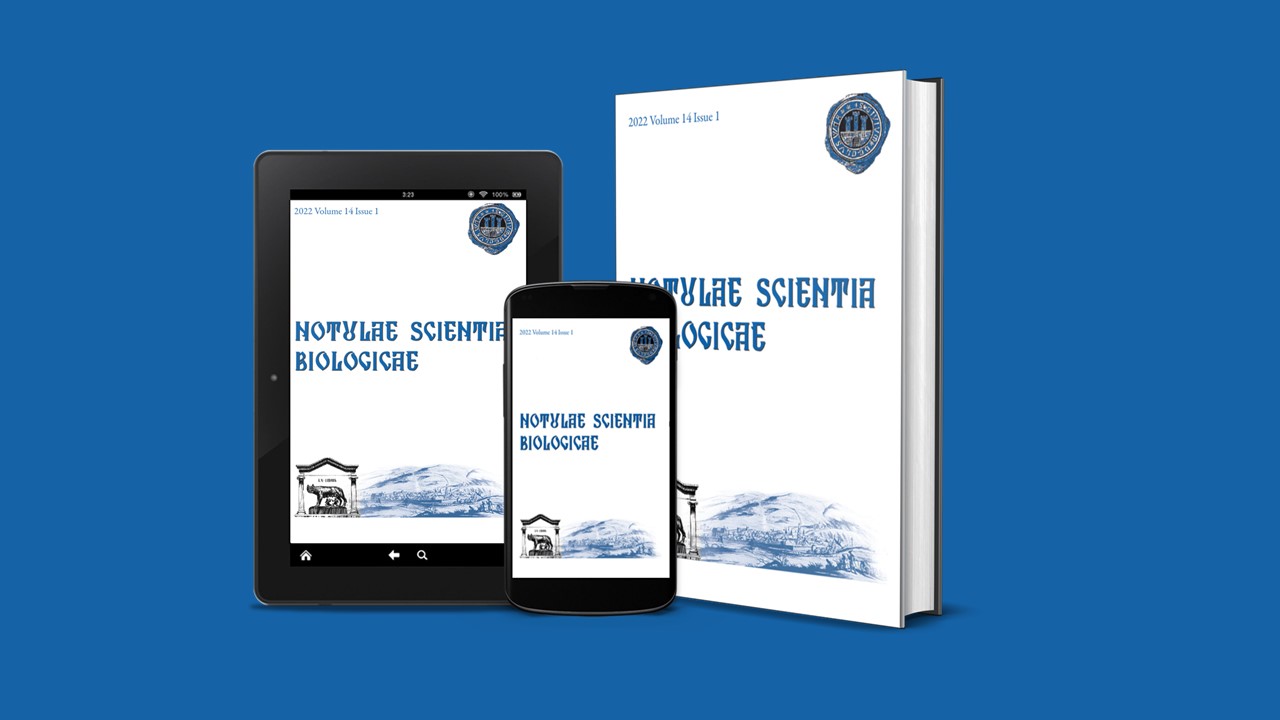Introduction pages
DOI:
https://doi.org/10.15835/nsb14111234Keywords:
Notulae Scientia Biologicae, Issue 4, Volume 13, 2022Abstract
Notulae Scientia Biologicae (http://www.notulaebiologicae.ro), Issue 1, Volume 14, 2022: The papers published in this issue represent interesting novelties in different topics of life science. Among the exciting researches or reviews, we invite readers to find news about: Using sumac (Rhus coriaria L.), as a miraculous spice with outstanding pharmacological activities; The role of silicon in plant under normal conditions and stress; Use of biostimulant compounds in agriculture: chitosan as a sustainable option for plant development; Post-monsoon bird assemblages in rural and riverine environments of Northern Howrah, West Bengal, India: A spatio-temporal approach; First report of ectoparasites from black rats (Rattus rattus Linnaeus, 1758) in oasis regions from Algeria; Traditional fishing gears of Bankura District, WB, India: Some uniqueness in fish catching; Pathogenicity and control of Meloidogyne spp. on some spinach, Swiss chard, and table beet plant cultivars; Effects of organic and inorganic fertilization on growth and yield of Physalis peruviana L. crop under Mediterranean conditions; Chemical composition analysis and biological activities of essential oil from Eucalyptus polybractea (L.), growing in plains of Punjab, Northern India, by two different hydro-distillation methods.
Metrics
References
Notulae Scientia Biologicae, Issue 1, Volume 14, 2022.

Downloads
Published
How to Cite
Issue
Section
License
Papers published in Notulae Scientia Biologicae are Open-Access, distributed under the terms and conditions of the Creative Commons Attribution License.
© Articles by the authors; licensee SMTCT, Cluj-Napoca, Romania. The journal allows the author(s) to hold the copyright/to retain publishing rights without restriction.
License:
Open Access Journal - the journal offers free, immediate, and unrestricted access to peer-reviewed research and scholarly work, due SMTCT supports to increase the visibility, accessibility and reputation of the researchers, regardless of geography and their budgets. Users are allowed to read, download, copy, distribute, print, search, or link to the full texts of the articles, or use them for any other lawful purpose, without asking prior permission from the publisher or the author.













.png)















